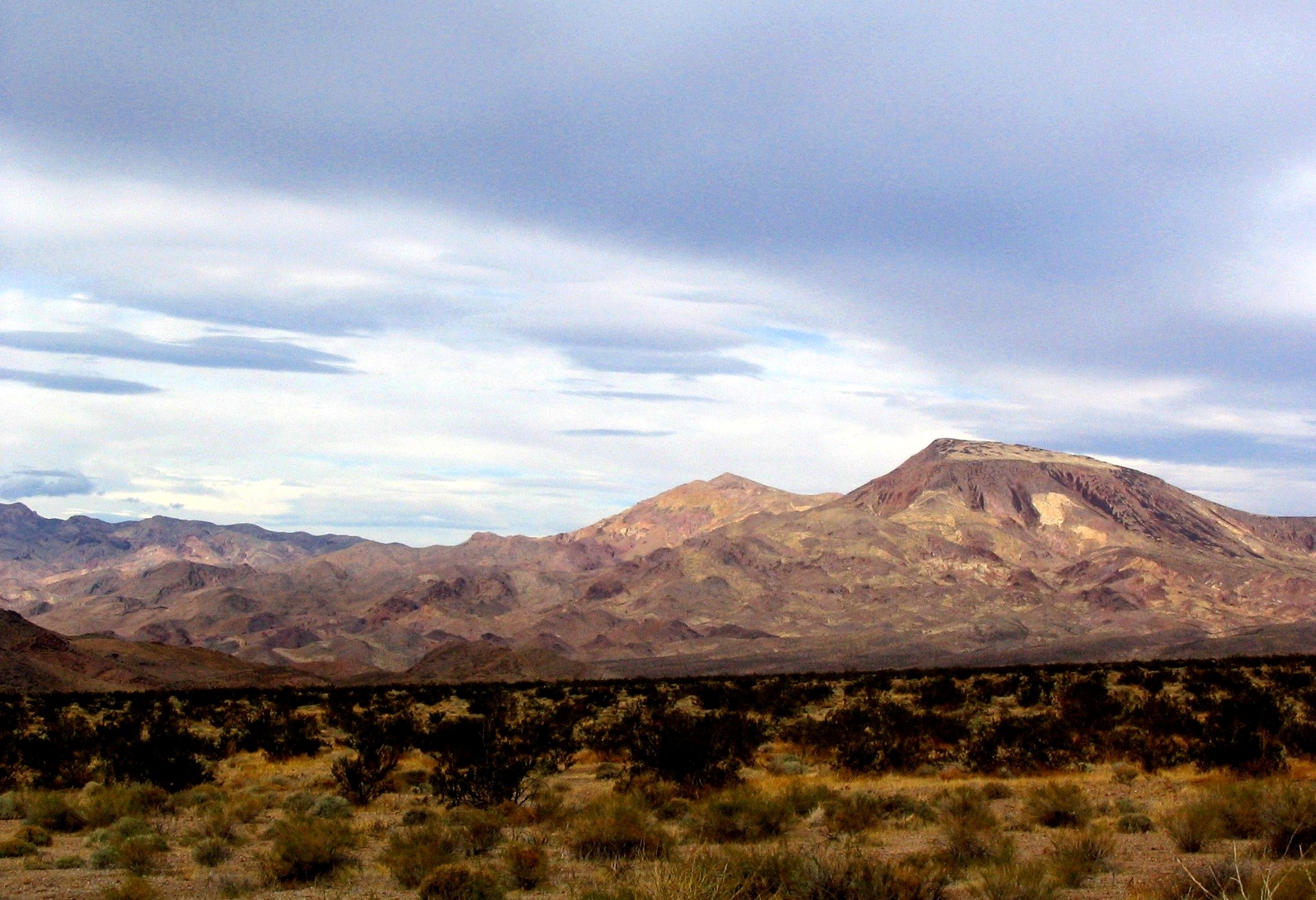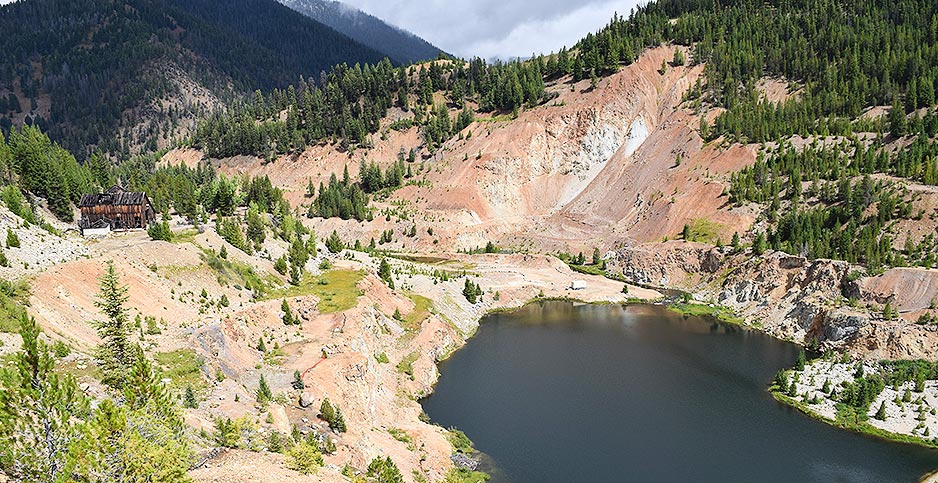President Donald Trump is driving a 21st-century gold rush that’s supercharging conservation battles on public lands across the West.
While individual conflicts grab day-to-day attention, it’s the rapidly growing cumulative total that’s astonishing even longtime environmental activists concerned about the effect of mining coal and critical minerals on federal land and wildlife.
The effort is focused on spurring new projects and, with the help of Republicans on Capitol Hill, opening up areas that the Biden administration made off-limits to mining. The Trump administration is also swiftly advancing mines that were already in the pipeline, in many cases envisioned under former President Joe Biden as vital for a renewable energy future. Under Trump, the priority is no longer digging up minerals to feed construction of electric vehicle batteries and renewables, but instead to bolster supply chains for technology like artificial intelligence, as well as military applications.
“What’s scary about this time around with the administration is that it’s so much more coordinated,” said Sam Zeno, a senior policy analyst for conservation policy at the liberal Center for American Progress, about the mining projects already moving forward.
Marc Fink, an attorney for the Center for Biological Diversity, added that Trump’s team seems to be making a strategic choice. “It’s kind of the shock-and-awe approach of this whole administration, to throw so much stuff out there that it’s hard for the public to know what to focus on,” Fink said.
Trump officials contend the U.S. must get into mining to keep the nation secure and that the Biden administration stifled the industry, despite its own rhetoric about bolstering domestic supply chains.
During a March interview with CNBC, Interior Secretary Doug Burgum said that the nation can produce minerals “cleaner, smarter, safer, healthier” compared to competitors like China, which currently dominates mining and processing of valuable materials. China is also heavily invested in Africa and Indonesia, where some mines have been tied to human rights abuses and environmental degradation.
“We’re not solving any global environmental problems, we’re just offshoring it and creating dependence on major power adversaries,” Burgum said. “We need to bring that mining and refining of critical minerals back to the U.S. for national security purposes.”
The administration has already pushed forward a regulatory shakeup.
In March, Trump inked an executive order that calls on federal officials to inventory mineral-rich federal lands where digging up critical minerals is to be prioritized. A month later, the Interior Department proposed cutting environmental reviews for certain projects down to a month or less, a process that some experts warn is rife with legal risks for both developers and regulators. Interior said Monday that it would complete within 14 days the environmental review to reopen a Utah uranium and vanadium mine.
The Trump administration has also added 20 proposed hardrock and coal mines and exploratory bids to a FAST-41 transparency list, providing public data about the pace and contents of environmental reviews and permitting.
And on Capitol Hill, Republicans through a filibuster-proof reconciliation bill are trying to reverse Biden-era decisions that blocked mining near Minnesota’s Boundary Waters Canoe Area Wilderness and construction of a 211-mile road in Alaska that would boost mining but potentially harm permafrost and wildlife. The administration has also scrapped a Biden-era land withdrawal that blocked mining around a tributary of the Rio Grande in New Mexico.
The Trump administration is not alone in arguing the U.S. mine approval process is too long. Xan Fishman, senior managing director of the energy program at the Bipartisan Policy Center think tank, said this country needs a transparent and reasonable timeline for deciding on whether or not projects can be built.
“The thing that we really want to avoid is just a years and years and yearslong permitting process with no end in sight,” he said. “Whether you want the projects to be stopped or to go forward, we should all generally agree that a good system of government would be able to come to a decision … without taking a decade.”
But environmental groups warn that attempts to move projects — many owned by companies based outside the U.S. — through faster reviews would likely result in damage to beloved landscapes. They also argue legal challenges are inevitable if reviews don’t comply with bedrock environmental laws like the Endangered Species Act and the Clean Water Act, or leave out critical buy-in from the public or affected tribes.

Mining battles are being teed up across the country.
In California, the Bureau of Land Management recently approved Australia-based Dateline Resources’ plan to continue mining — and explore for rare earth elements — inside the Mojave National Preserve, which conservation groups argue is a protected area that’s home to several endangered species such as the Mojave Desert tortoise.
In Arizona, the Trump administration has vowed to advance the proposed Resolution Copper mine despite ongoing litigation. Some members of the San Carlos Apache Tribe have warned the project will decimate land they consider sacred and are asking the Supreme Court to block the mine.
“They’re purporting to move forward with as many projects as they can, as quickly as they can,” said Aaron Mintzes, senior policy counsel for Earthworks. “It’s not clear to me how many will be successful.”
Permitting and the ESA
The push for more mining and expedited reviews is occurring as top Trump officials move to shrink the reach of the Endangered Species Act.
Burgum’s truncated NEPA reviews, for example, would allow Interior — leaning on the president’s national energy emergency designation — to soften requirements for ESA consultations. Yet another move the administration is proposing: to redefine what it means to “harm” a protected species. Actions that directly hurt or kill animals and plants would be considered “harm” but not those actions that alter the habitats that species rely on.
Along with questions around Indigenous rights and water protection, challenges to mines have often focused on threatened and endangered species that could be harmed by proposed projects.
For example, groups rallying to halt mining near Minnesota’s Boundary Waters Canoe Area Wilderness — more than 1 million acres of pristine forests, glacial lakes and streams in the Superior National Forest — warn the area is home to three federally protected species, including the gray wolf, the Canada lynx and the northern long-eared bat.
In Idaho, conservation groups suing the Trump administration over Perpetua Resources’ Stibnite gold project, an open-pit project in the headwaters of the South Fork Salmon River, say the mining operation could decimate chinook salmon, steelhead, bull trout, wolverine and whitebark pine, which are protected as threatened under the Endangered Species Act.

The Stibnite mine, which received a final record of decision from the Forest Service under the Biden administration, is now awaiting approval from the Army Corps of Engineers. If approved, it would be the nation’s first mine to produce antimony, a mineral at the center of a national trade spat with China.
Perpetua Resources counters that its project has already undergone eight years of science-based interagency permitting and that its inclusion on the FAST-41 dashboard will add transparency and improve oversight. The Stibnite mine, the company says, is also designed to clean up legacy mine waste, improve water quality and reconnect native fish to spawning habitat they have been blocked from for more than 80 years.
“With too many mining projects tied up in decades of red tape, we applaud this administration’s efforts to ensure responsible mining projects move forward in a well-vetted and timely manner,” Marty Boughton, a spokesperson for Perpetua, said in an email.
Boughton also pointed to the project’s final environmental impact statement, which says the project would benefit chinook salmon and steelhead by allowing them to access habitat that’s been cut off for decades through the creation of new passageways.
National parks
Environmentalists warn that an executive order signed by Trump in March could open up vast amounts of public lands to mining.
Under the Mining Law of 1872, most federal lands are already open to mining claims. Zeno with the Center for American Progress in a recent report pointed to an analysis by the National Parks Conservation Association, which found that more than 3,700 mining claims exist within the boundaries of national parks and national monuments.
Zeno also noted that the Trump administration has revived a fight over a plan to expand a mine on National Park Service lands in California.
BLM last month approved Australia-based Dateline Resources’ plan to look for rare earth minerals at a mine site inside the Mojave National Preserve. BLM in a release referred to the Colosseum mine as the nation’s “second rare earths mine.”
But Chance Wilcox, the National Parks and Conservation Association’s California desert program manager, pointed to internal emails obtained under the Freedom of Information Act showing that the National Park Service in 2022 found that owners of the Colosseum mine were conducting unpermitted road work on federal land.
Wilcox also said the company is operating under a 1985 plan of operations from BLM that allowed the company to mine for gold and reclaim the land but doesn’t allow for exploratory work or digging up rare earth minerals. Wilcox said the company needs legal approval from the National Park Service and to go through the NEPA process given the effects the project would have on the Mojave ecosystem, which hosts the second-highest concentration of rare plants in California and is an important habitat for desert bighorn sheep.
The Colosseum mine was originally authorized under a 1985 plan approved by BLM. When Congress passed the California Desert Protection Act in 1994, the land became part of the Mojave National Preserve.
The Colosseum mine is now subject to the Mining in the Parks Act. Passed in 1976, the legislation states among other elements that all mining in the national park system “should be conducted so as to prevent or minimize damage to the environment and other resource values.”
Wilcox asserted the mine is operating using an expired plan of operations and has failed to show there are rare earths at the site.
“The Trump administration is blatantly ignoring process and commonsense in encouraging mining in one of America’s largest national parks,” said Wilcox.
Kerry Shapiro, an attorney at the law firm Jeffer Mangels Butler & Mitchell representing Dateline and its subsidiary, Colosseum Rare Metals, said in an email that Interior reaffirmed the company’s right to mine and explore under its “valid” and “existing plan of operations” at the Colosseum mine site.
Shapiro said the site has been mined for over 100 years, long before the creation of the Mojave National Preserve.
The Colosseum mine, Shapiro added, operates under federal oversight and complies with federal law, saying that there are no claims against Dateline or CRM for environmental damage in the area. “One unsubstantiated allegation of damage to an access road was rescinded by the National Park Service,” Shapiro added.
As for proving the existence of rare earths, Shapiro noted the U.S. Geological Survey has identified an area about 100 miles long spanning the Mojave Desert area that includes the Colosseum mine site, as well as the Mountain Pass rare earth-bearing system. Mountain Pass is the nation’s only mine commercially producing rare earth elements.
“Rare earths have been found at the Colosseum mine site,” Shapiro said.
